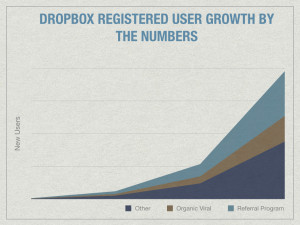Referral marketing has become a powerful strategy for e-commerce businesses to acquire new customers through word-of-mouth recommendations. Let’s explore three compelling case studies that demonstrate the effectiveness of well-executed referral programs.
Customer Behavior Statistics
- Trust and Decision Making
- 92% of consumers trust referrals from people they know
- 74% of consumers identify word-of-mouth as a key influencer in their purchasing decisions
- People are 4 times more likely to buy when referred by a friend
- Referral Value
- Referred customers have a 16% higher lifetime value
- The lifetime value of a referred customer is 25% higher than that of other customers
- Customers acquired through referrals spend 200% more than the average customer
Program Performance Statistics
- Conversion Rates
- Referral marketing generates 3-5 times higher conversion rates compared to other marketing channels
- Referred customers have a 37% higher retention rate
- B2C referral programs typically see a 2.3% conversion rate
- ROI and Cost Effectiveness
- 78% of B2B marketers say referral programs generate good or excellent leads
- Referral programs have a 3x higher response rate compared to other marketing channels
- The cost per lead is 60% lower for referral marketing compared to traditional advertising
Implementation Statistics
- Business Adoption
- 83% of companies with successful referral programs experience more than 60% year-over-year revenue growth
- Only 30% of B2B organizations have a formalized referral program
- 88% of companies that pay double-sided referral rewards see success within 3 months
- Program Design
- Offering a reward increases referral likelihood by 39%
- Double-sided rewards generate 3.2x more responses than one-sided rewards
- Mobile-optimized referral programs generate 2.5x more shares
Industry-Specific Statistics
- E-commerce Specifics
- E-commerce businesses with referral programs are 70% more likely to achieve revenue goals
- 84% of B2B decision-makers start the buying process with a referral
- Referral programs can reduce customer acquisition costs by up to 50% for e-commerce businesses
Social Media Impact
- Social Sharing
- 78% of referrals happen on social media
- Referred customers are 4x more likely to refer others to the same brand
- Social media referrals lead to a 70% higher conversion rate
Generational Differences
- Age Group Variations
- Millennials are 5x more likely to share referral codes compared to Baby Boomers
- Gen Z consumers are 99% more likely to make a purchase based on social media referrals
- 92% of 18-34 year-olds seek recommendations from friends before making a purchase
Best Practices Backed by Data
- Program Optimization
- Personalized referral messages increase conversion rates by 77%
- Email referral campaigns have a 16% higher click-through rate compared to other marketing emails
- Referral programs with gamification elements see 22% higher engagement rates
1. Dropbox: Simple Sharing, Exponential Growth

The Strategy
- Offered extra storage space to both referrers and referees
- Made sharing incredibly simple with a clear value proposition
- Gamified the experience by showing progress towards more storage

Results
- Increased signups by 60% permanently
- Went from 100,000 to 4 million users in just 15 months
- 35% of daily signups came through referrals
Key Takeaways
- Offering a mutual benefit creates a win-win situation
- The reward should align with the product’s core value
- Simple, clear messaging enhances program adoption
2. Harry’s: Pre-launch Referral Campaign
The Strategy
- Created a tiered reward system for referrals before launch
- Used unique referral links for easy sharing
- Implemented a “waiting list” to build anticipation
Results
- Collected 100,000 emails in one week
- 77% of email addresses gathered were via referrals
- Referred customers had a 27% higher average order value
Key Takeaways
- Pre-launch referrals can create significant buzz
- Tiered rewards incentivize multiple referrals
- Exclusivity and anticipation drive engagement
3. Stitch Fix: Personal Styling, Personal Referrals
The Strategy
- Offered a $25 credit for both the referrer and referee
- Implemented post-purchase referral prompts
- Leveraged social proof with “recommended by a friend” messaging
Results
- 39% of clients were acquired through referrals
- Referred customers had a 2x higher lifetime value
- Reduced customer acquisition costs by 27%

Key Takeaways
- Timing referral requests post-positive experience increases success
- Monetary rewards work well for higher-priced services
- Personal recommendations boost trust and conversion rates
Conclusion
These case studies demonstrate that successful referral programs share common elements:
- Mutual benefits for both parties
- Seamless sharing mechanisms
- Alignment with the brand and product value
- Clear, compelling messaging
By studying and adapting these strategies, e-commerce businesses can create effective referral programs that drive growth through the power of word-of-mouth marketing.